At this point of the quarantine from the Covid-19 pandemic, movie maniacs out there are looking for something a little bit more. Lucky for you, we got you covered!
The Movie Mensch proudly presents 13 television shows that feel like movies, week in, week out.
10 Movies to watch while stuck inside!
What’s great about this list is it gives you a whole lot more than the two-hour window of entertainment that a film typically provides. Some of these shows were on for years, and that’s dozens upon dozens of hours to binge of film-worthy television.
The Sopranos
What can be said that hasn’t already been stated about David Chase’s The Sopranos? Well, from the point of view of a movie fanatic, there is so much to extol about the virtues of the HBO mob drama. From January 10, 1999 through June 10, 2007, the world was riveted by the goings-on of a New Jersey based Mob boss and his family.

Chase took the classic family drama format and threw it to the wolves. James Gandolfini as Tony Soprano was a case of casting nirvana. Then again, the show’s creator impeccably cast his entire ensemble. Can you imagine anyone else portraying the devoted, but in no way wallflower, wife Carmela Soprano than Edie Falco? Hardly!
The way that Chase and his team interwove stories over its eight year run was utterly sublime. It was like a new movie each week. When you “binge” watch this series, every two episodes mirrors the cinematic experience delivered by some of the best mob movies out there, a la Goodfellas. The cinematography, the score, the editing and the manner in which the screenplays interwove rich dialogue, powerful emotive investment by the audience and above all else … it was simply an utter blast to experience.
I’m jealous of anyone who gets to undertake this once-in-a-lifetime show that first time.
Justified
Timothy Olyphant starred as a U.S. Marshall whose entire existence is defined by his upbringing in the Bluegrass state. That comes to life through the pilot episode. Deputy Marshall Raylan Givens comes face to face with a man he was charged with bringing in. After threatening to shoot the individual if he doesn’t come peacefully (in a crowded restaurant no less), he does do just that when the perp refuses. That’s how Justified commences. After that mess, our Marshall “punished” by being sent to a Podunk Marshall office in his home state of Kentucky—a locale he’s been working his whole life to escape! Once the drama shifts to Kentucky, the searing drama shows its true stripes as a chilling—and surprisingly funny—character study of two souls on opposite sides of the law. They are on a collision course that we learn, started back in high school.
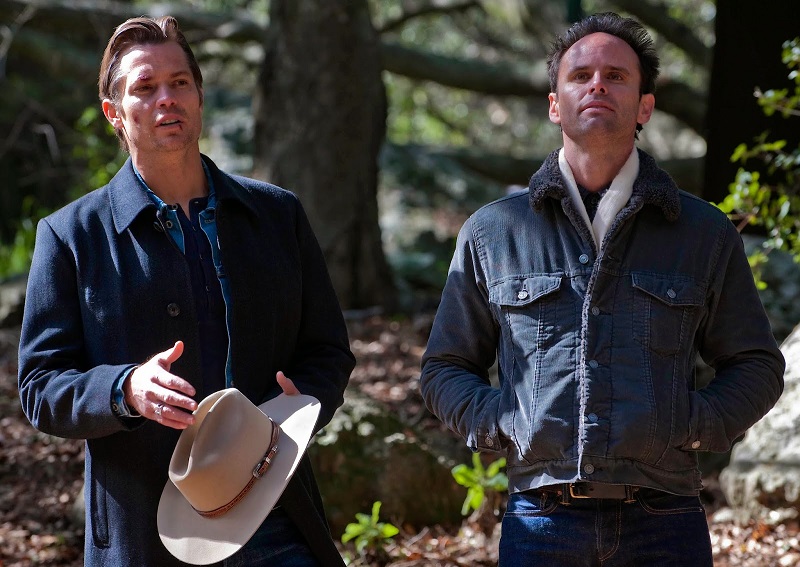
Deputy Givens is the Yin to the Yang that is Walton Goggins’ Boyd Crowder. During the show’s five year run (2010-2015) their paths crossed frequently. What is so astounding about the writing on this drama, is how in one episode they might be on polar opposites of the moral agenda, there are still many eps where the two could not need each other more.
It is ever present through the performances of Goggins and Olyphant, that these two share a kinship. Even if their life paths set them on a path where only one can remain free. There’s something about being in the coal mines of Kentucky that bonds people. That is one explanation for the Givens and Crowder camaraderie. That comes through heavily and wholeheartedly in Justified and is the thread that ties these two together, for better or worse.
In between all those epic tête-à-têtes between the two leads, there is a surplus of character development throughout the ensemble that is as rich as that Kentucky coal. Standouts include Joelle Carter with her riveting turn as Ava Crowder, Kaitlyn Dever (who would eventually grow up to steal our hearts in Booksmart) and of course the always awesome Mary Steenburgen, Michael Rapaport, Sam Elliott, Neal McDonough and Margo Martindale (who’s in another series on this list!).
Narcos & Narcos: Mexico
Narcos and Narcos: Mexico are collectively some of the most stunning work ever undertaken with the war on drugs narrative. The first two seasons of Narcos chronicles the rise and fall of nefarious Columbian drug kingpin Pablo Escobar (a breathtaking turn by Wagner Moura). It achieves the most astounding of feats. Escobar is clearly “the villain” in the traditional sense of the entity that is the antagonist. Yet, he is so bloody appealing and endearing, in terms of how he is presented to the audience, that we are conflicted. This guy needs to be brought down and punished for his crimes against countless souls.
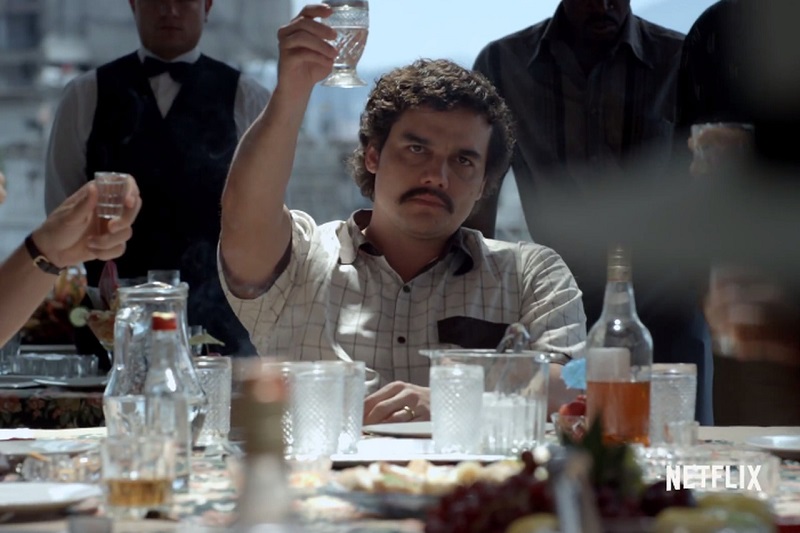
The first two seasons of Narcos features a wickedly determined pair of DEA agents seeking to bring down the Columbian drug lord’s empire before his toxic poison—cocaine—crosses the globe, particularly America. The standout here is The Mandalorian’s Pedro Pascal as Javier Peña and Boyd Holbrook as Steve Murphy. The pair are fierce, and the first two seasons are as gripping as any film I’ve seen in recent memory. Plus, it’s also a fascinating chronicle of how cocaine went from a passive influence on the world to it being … everywhere.
Now, at the close of Narcos season 2, it becomes clear that the traffickers in Columbia need help meeting the demand of the United States. As history has told us, they solicited and then enlisted the help of Mexican drug lords, who previously have been dealing solely in marijuana. Leading the cast in Narcos: Mexico is an astounding performance by Rogue One’s Diego Luna as Miguel Ángel Félix Gallardo. His aspiring kingpin is the source of mucho frustration on the part of a new crop of DEA agents, who are as intense as the duo from the first two seasons. Thing is, they are also driven by revenge and we all know how that tends to go for law enforcement on the other side of the border.
It all adds up to an explosive finale of season two and cannot wait for Narcos: Mexico: Season Three.
Just a note … what sets all four seasons of Narcos apart are that the stories are all based on true tales in the drug war and as such, its raw reality is palpable and raucously riveting.
Deadwood
Based in truth, but firmly fictionalized, Deadwood follows the birth and build-up of a gold rush town in the Black Hills of what would become South Dakota. It is told, primarily, through the eyes of a former Montana sheriff (Timothy Olyphant’s Seth Bullock) who moves to the titular town to open a hardware store with his good friend (played by John Hawkes). Upon arrival, they discover that although there is a mayor (E.B. Farnum, played by William Sanderson), the community is truthfully run with an iron fist by saloon and whorehouse owner, Al Swearengen (Ian McShane). He has a flair for dramatic verbal volleys, that are as ferocious as any of his weapons.
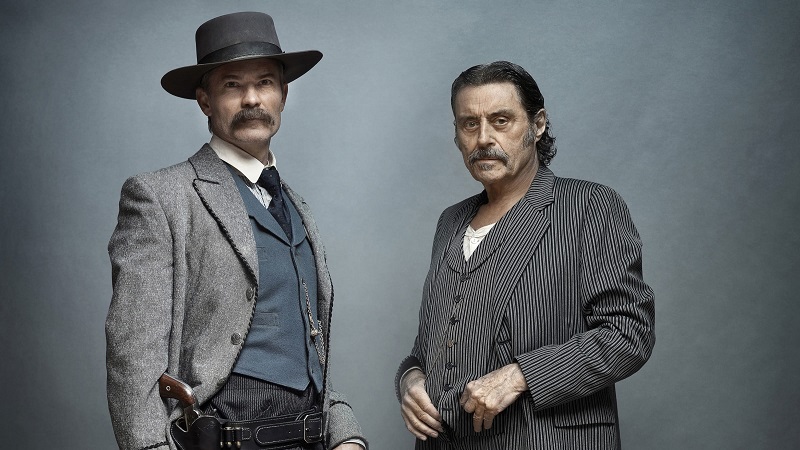
As the first season commenced, viewers were introduced to two real-life residents of the famed community—Calamity Jane (Robin Weigert) and Wild Bill Hickock (Keith Carradine). The former will play a larger role over the course of the show’s four season run than the latter. But, having been to Deadwood, both Jane and Bill are buried side-by-side. It is astounding to see their stories play out on HBO’s acclaimed period drama.
What makes Deadwood so incredibly visceral is how it takes a no holds barred look at the so-called “Wild West.” Often times, Hollywood has romanticized the era. As enthralling as the show is to witness, it’s a tough pill to swallow at times in terms of how people who are different are treated—women (whether working girls or even wives or girlfriends) and of course the struggles of a community that was trying to put their town on the map of the budding United States of America, Asians. The cast is amazing. The production value was off the charts and the drama kept us coming back, week after week. As three-dimensional as these characters were written on the pages of Deadwood’s scripts, they became a part of our life and as such, we were immensely invested.
So much so that when the show abruptly ended after season four, the fans collective response was so intense, that the network green lit a two-hour film that sewed up all those loose ends and was a gift from the heavens above. It left us beyond satisfied. 2019’s Deadwood: The Movie delivered an informative and wickedly entertaining chance to see off our old western friends as they looked towards a new century.
Mad Men
Don Draper. That’s all you have to say and immediately an image of 60’s cool illuminates your mind. Jon Hamm was born to play the ad executive with a mysterious past, who storms through life in New York City’s advertising community when these so-called Ad Men were king. The production design, the scripts, the ensemble … all absolutely exquisite and remarkable. Every single episode feels like the highest artistic film form.
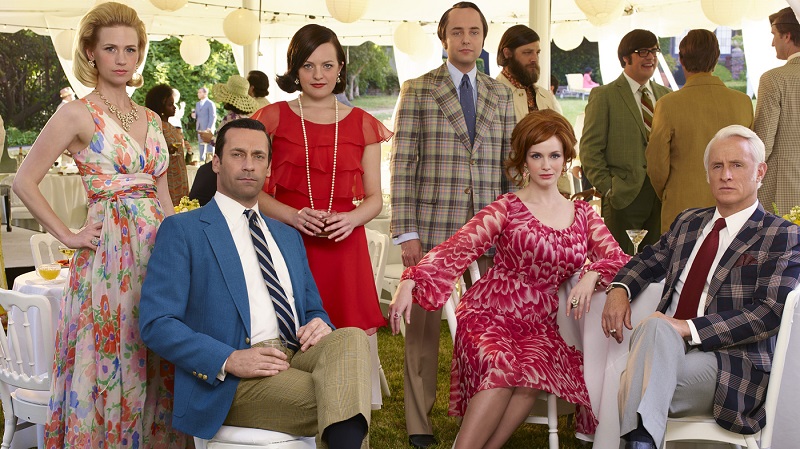
Creator Matthew Weiner captured lightning in a bottle with his baby and what he achieved will likely never be topped again. He centered his drama on these advertising giants who walked on water during the 50s and 60s. By focusing on Hamm’s Draper, we were gifted a front row seat to the evolution of our society from the dawn of the 60s through its explosive close. Of particular note were the JFK assassination and moon landing episodes. Weiner never sacrificed plot richness to interweave historical events. Yet, what the creative Mad Men team did was deliver gripping entertainment that felt as real as a documentary, all while lacing the eps with interpersonal drama that could not have been more consuming.
Hamm was not the only standout member in this ensemble of excellence. The character arc executed by Elisabeth Moss with her Peggy Olson was a study in brilliance personified. She went from quiet as a mouse secretary to the rare female member of an advertising team, who never lost sight of her humble beginnings while trailblazing new ground. Christina Hendricks was also stellar as Joan Harris. She too was provided with the richest of character arcs that found her providing much more than merely a secretary pool leader. John Slattery’s Roger Sterling served many roles besides being a founding member of the ad agency. As a World War II veteran, he was older than Draper, and found great joy in never acting his age. For example, the episode where he takes acid is one of the ages! Both Aaron Staton’s Ken Cosgrove and Vincent Kartheiser’s Pete Campbell were powerfully developed characters whose arc over the show’s 92 episodes was any actor’s dream.
From top to bottom, Mad Men was and is one of the best television programs to ever reach the air. It’s cinematic feel permeates production design, its score and soundtrack as the stellar acting chops of the ensemble exponentially blew audiences away. When it comes to its soundtrack, for example, much was made when producers paid an enormous amount of money to use The Beatles song, Tomorrow Never Knows. Not only did it warrant shelling out the cash to secure the rights to the song due to what the entire episode encompassed, but it was a song of the time. When it came to capturing the “feel” of an era long gone, music is a priceless investment to striking an emotive connection. That was true throughout the entire eight-year run of Mad Men.
The Wire
In 2002, HBO premiered a little show about Baltimore and its gritty streets, and the cops charged with patrolling them that did more for establishing the fact that we are in a “new” golden era of television than any show on this list. David Simon created the show and took what was teased in programs such as Homicide: Life on the Streets and took it to the nth power. Given what a pay cable channel can tackle is significantly more than a network program, like that NBC cop show that ran for seven seasons, The Wire inherently was going to blazingly forge new and powerful ground.
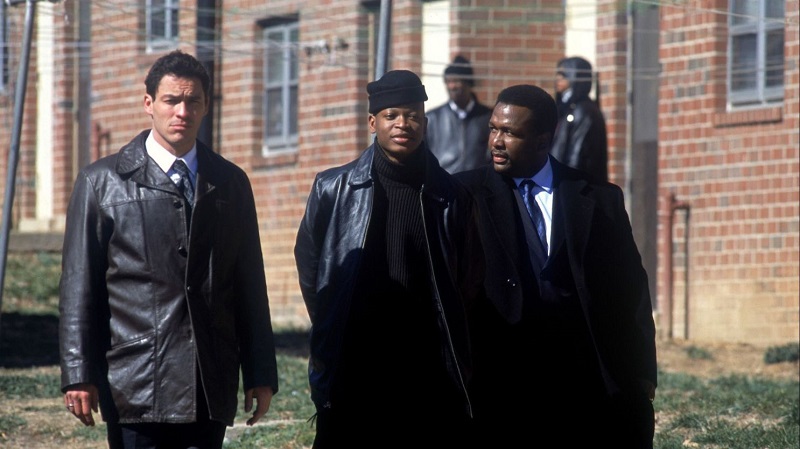
The Wire chronicled a group of detectives doing their best to keep drugs and crime off the streets of Baltimore. Led by Dominic West’s Det. James ‘Jimmy’ McNulty and Det. William ‘Bunk’ Moreland (Wendell Pierce), the powerful pair routinely ran into brick walls—whether they political, legal or illegal, Simon’s classic program was one-hundred-times more powerful than a majority of the cops chasing down drug dealer flicks that Hollywood delivers.
Something The Wire did so astonishingly well was how it equally spotlighted both sides of the legal coin. Not only were fully formed identities provided to the cops, but also the drug dealers, those who frequented those pushers and everyone else who were caught in the crossfire of all the above.
Simon’s show could not have casted better if it tried. For example, the program introduced us to a young Michael B. Jordan, who appeared in 14 episodes between 2002 and 2004. The cost of the war on drugs, from the innocents to those involved, was captured mightily by a bevy of brilliant directors (27 over the run of the show). They managed to exemplify every possible angle conceivable in ways that other like-minded programs and films only teased at the most and grossly omitted at the least.
The Morning Show
When Apple TV+ was seeking to make a splash upon its debut last fall, one of the hour-long dramas they rolled out was The Morning Show. It dealt with an issue that had been dominating the headlines since the disgrace of former studio honcho Harvey Weinstein. The #MeToo movement lay at the heart of this program about a TV morning news show that could easily have been confused for a direct portrayal of the Today Show and how Matt Lauer’s exit was so sensationally catastrophic.
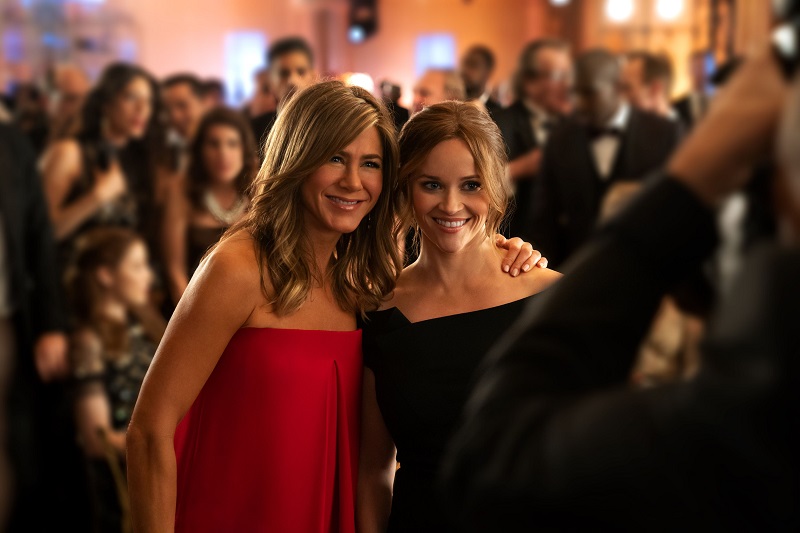
On the Apple program, Steve Carell plays the Lauer-ish role of Mitch Kessler, a morning show stalwart who had just signed one of the largest contracts ever. During the pilot episode, a story breaks that not only did Kessler use his position to elicit sex from subordinates, but it is alleged that the network knew about his behavior, turned a blind eye and even tried to cover it up. Caught in the middle of this firing range is Jennifer Aniston’s Alex Levy. She is Mitch’s co-host and their chemistry was palpable. It was easy to see why they were number one in the ratings and had been for so long. What else is revealed (all within the pilot!) is how out-of-touch the network executives were with Alex and her contract negotiations that had stalled. There were rumors that before this Mitch scandal hit, they were looking to show Alex the door.
Then, there’s Reese Witherspoon as Bradley Jackson. Her southern firecracker of a character comes into The Morning Show world like a hurricane, after a video of her reporting went viral. Adding her to an already explosive landscape within the series’ first act sets in motion a chilling, raw and extraordinarily crafted dramatic journey that few television programs have achieved recently.
Billy Crudup as the network exec, Cory Ellison, is the best thing he’s ever done—and yes, that is saying something. Mark Duplass’ Chip Black is the show’s executive producer. Black’s uncanny ability to be all things to all people, at the highest level of his career, is mind-blowing to witness. With The Morning Show, the writer-director showed more of his thespian talents in another role brilliantly matched with performer.
Carell does something that is truly special and simultaneously, firmly a risk of the highest order. His character is a scumbag, for that, there is no question. Yet, as the comedic actor plays him, he’s affable. He has us believing that he is sorry for something. In reality … he possesses not one single shred of apologetic truth for his behavior. Mitch is a man who abused his power and ruined lives to cover up his lies. Yet, one can see why Alex—or any number of women that encircle his orbit—would consider giving him a second chance.
Although Aaron Sorkin did not write The Morning Show, it sure feels like a Sorkin script. That comes from its topical nature, yes, but also how even the smallest part feels more pops off the page than half the characters introduced in movie scripts this past year. Not only does the ensemble emit that big screen feel, but its scope and searing commentary on the widespread abuse of power lends itself to the cinematic comparison.
Breaking Bad
“I am the one who knocks,” Walter White (Bryan Cranston) iconically says on the Vince Gilligan created show. There could be no more sensational six words that encapsulate a television tsunami of awesomeness that is Breaking Bad. The crux of the show followed a chemistry teacher who has a life wakeup call that is Stage IIIA lung cancer. Now, most of us might respond to such news by reassessing our relationships with family and friends, as well as looking at our professional choices and hopefully try to change our life course in the time that remains. As the creative geniuses that made Breaking Bad one of the most successful television programs can attest, that is not how Walter White responded to his medical news. He instead, worried about his family’s well-being after he passed and decided to reinvent himself as a meth cook alongside one of his former students Jesse Pinkman (Aaron Paul)—who knew about such things.
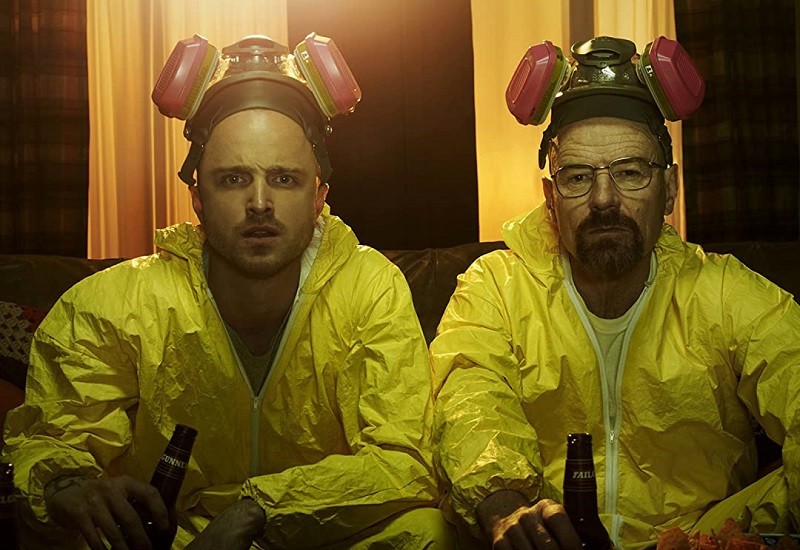
The White metamorphosis was nothing short of epic and like one of your favorite films, it is a storied journey that audiences could watch over and over and get something different with each viewing. During the show’s 62 episodes, White goes from the butt of jokes by his DEA Agent brother-in-law Hank Schrader (Dean Norris), to one of the most wanted men in America. It is a journey that leaves much in its wake, from ruined lives, death on multitude of occasions, all in the name of securing the financial future of his family. Now, that sounds good and all, but there is a clear mark in Gilligan’s masterpiece where White absolutely and unequivocally adores who he has become. It is at that point that this television program becomes one of the greatest pop culture representations of a drug kingpin as each episode out-rivets countless crime boss-centric flicks who wish they possessed the power and panache that White exudes.
It is safe to say that Cranston will never inhabit a soul as stunning as Walter White—on television or film. The Emmys rewarded him three times for the role of the century. What else made the show more big screen savvy, as opposed to the small screen thinking that many brought to story creation for the airwaves, was how each member of the ensemble serviced the characterization that Cranston was ever-evolving week-to-week. The most obvious example was Paul’s Pinkman. The actor took what could have been a cardboard cut-out of a burnout high school failure and petty drug pusher and with Gilligan’s prose and backstory, gifted the world the second pop culture institution to come out of Breaking Bad after Cranston’s. Many programs are lucky if they have one iconic character. Pinkman’s power was so resonant that Gilligan felt compelled to add El Camino to the Breaking Bad universe that specifically showed the world what happened to Jesse during the final moments of the show and beyond.
There’s also the legendary presence of Saul Goodman (Bob Odenkirk), a lawyer who will get as dirty as his clients need him to be—who lives on in the prequel Better Call Saul. Each character in Breaking Bad could have its own spin-off, they are so rich. Thankfully, Gilligan has gifted us the Goodman prequel where stunning characters such as Giancarlo Esposito’s Gus Fring, Jonathan Banks’ Mike Ehrmantraut and Mark Margolis’ Tio Salamanca live on for a public that did not get enough of this world in Breaking Bad.
Game of Thrones
With an epic book series from George R.R. Martin to draw from, Game of Thrones had the benefit of movie-worthy source material. Luckily for the famed author’s fans, producers saw the benefits that a television series treatment would deliver. It would allow visual storytellers to go as deep as necessary in telling this Medieval tale set in the known worlds of Westeros, Essos, and Sothoryos. There are so many characters to keep track of, a movie would have had to sacrifice the very depth that made Martin’s novels so electric and page turners. Instead, through the medium of television, fans were treated to weekly epic motion pictures that would eventually catch up to as far as Martin had written about this world (fans are still waiting for Martin’s next book in the series). For some, it was there that the program lost its mettle, but for a majority of the HBO series’ fans who stuck with the program, it became even more must-see TV.
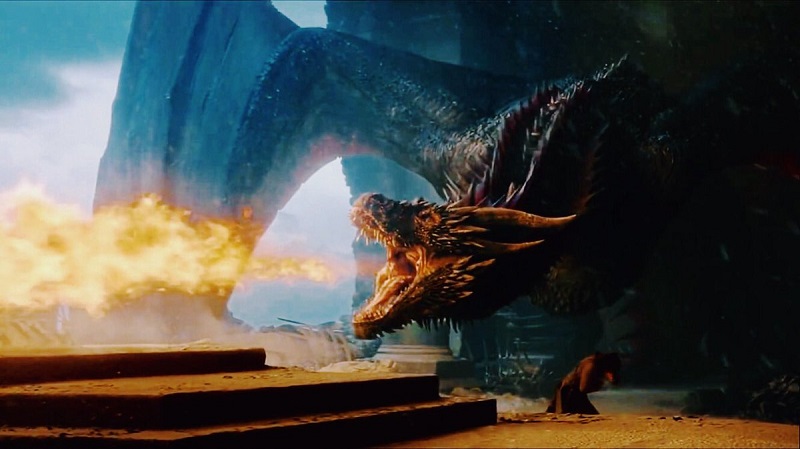
One thing that all the shows that give movies a run for their money on this list share is cast. What is so fascinating about Game of Thrones is that most of these thespians were hardly household names before Game made them. Who playing who is always key. Many a director I have spoken to have always stated that 90-percent of their job is casting. Can you imagine anyone else other than Peter Dinklage, Lena Headey, Emilia Clarke, Kit Harrington, Sophie Turner, Maisie Williams and Nikolaj Coster-Waldau—to name just a few—portraying their roles? Hardly!
What else raised the Game of Thrones bar was its approach to visual storytelling. The cinematography was epic, the fight choreography pushed envelopes, the special effects made Lord of the Rings look like child’s play and then there’s the score, which has garnered its own legion of fandom all its own.
The Mandalorian
Star Wars TV used to solely revolve around animated series such as The Clone Wars. That all changed when Jon Favreau (Iron Man, The Lion King) pitched an idea for a program to Disney-Plus that centered around a bounty hunter group, i.e. Mandalorian, that was probably most famously represented by Boba Fett in The Empire Strikes Back and Return of the Jedi. Oh, the words Baby Yoda probably helped that pitch meeting turn into fast-tracked television as well.
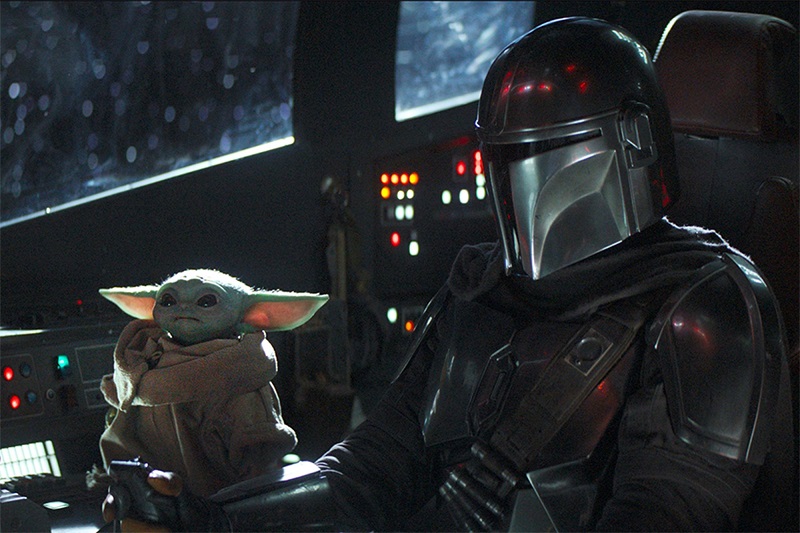
Once again, casting—feel like a broken record—but Lucasfilm scored a touchdown when they cast Pedro Pascal (of Narcos fame) in the title role. Favreau needed an actor who could give us all the feels simply by his vocal toolbox and overall body movement. Pascal provides that and so much more. He is all of us when, in the pilot, he discovers that his package is in fact a baby. There are certain things people don’t do, even bounty hunter/assassins. We don’t kill babies. When the Mandalorian saw that was “the package’s” fate, all bets were off, and a season-long thrill ride commenced.
The Star Wars landscape is ever-present on The Mandalorian, but the show is uniquely its own entity. The goings-on of the galaxy is discussed and come into play throughout, but Favreau superbly wove a web that firmly stands on its own. It is largely why this writer feels some solid encouragement about the new trilogy that was green lit that will exist in the same “landscape” as Star Wars—but will have absolutely nothing to do with the Skywalker story in the least.
Over nine episodes, the Mandalorian confronted varied foes besides those who wished Baby Yoda ill. The plotlines throughout were fascinating and electric, and yes as cinematic as the Star Wars flicks. In fact, some could argue that The Mandalorian was even more film-like than some of those movies! By employing a varied group of directors, the feel was surprisingly fresh and simultaneously uniformed. Among the episode helmer highlights was recent Oscar winner Taika Waititi (Jojo Rabbit), who actually voiced a droid (IG-11) during episode two, Bryce Dallas Howard and Rick Famuyiwa (2015’s supremely underrated Dope).
If I had to narrow my praise of the show to solely one item, it would have to be the characterization of the title character by Pascal. The soon-to-be-seen in Wonder Woman 1984 actor gives us a heartwarming turn from a character who was traditionally cut from a cloth that is pure violence extoller. Audiences have made it clear that they would follow this Mandalorian into any corner of the universe, any day, all day.
Homeland
Claire Danes had a storied career long before a Showtime television program delivered her the role of a lifetime. She was first introduced to vast audiences in My So-Called Life and since, has found success in both film and television. What she was gifted with her casting in Showtime’s Homeland was a role that will define her lifetime of thespian work. She exploded on the scene in 2011 as a bipolar CIA Agent who is convinced that an American former prisoner of war (the supremely awesome Damian Lewis) was in fact turned by al-Qaeda and is just waiting to do some serious damage to the Homeland.
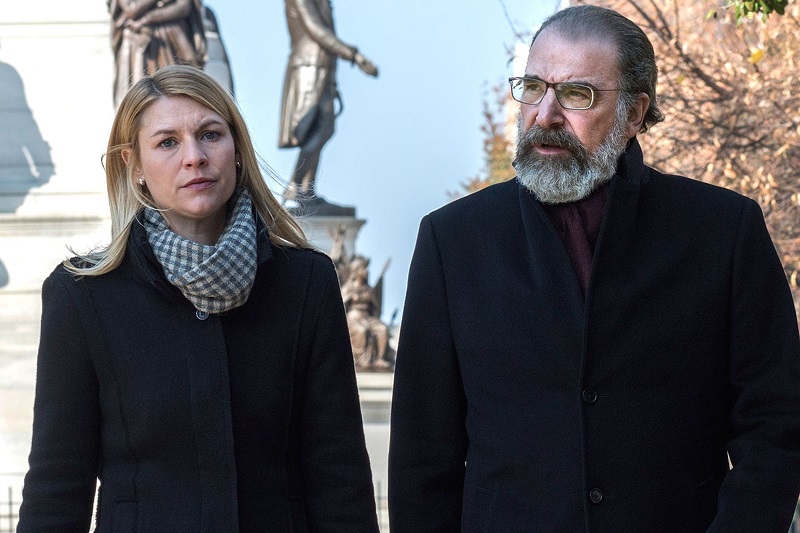
The show met the challenge that was inherent by the show’s premise. Instead, the Alex Gansa and Howard Gordon created show vastly opened itself up to a myriad of international issues that confront our real-life clandestine heroes and executed them with the complexity that is also reflected in the work of spies across the globe in these highly treacherous times.
Danes’ performance seems to exponentially grow in intensity as the seasons progress. Now in its final season, those who have missed the boat on this program can binge watch it on Hulu, YouTube and of course Showtime, and be treated to movie-caliber thrills, chills and storylines that reverberate long after those credits roll.
Oh, that broken record about casting is about to get played again. Danes is joined in the awesome actor department by Emmy and Grammy Award winner Mandy Patinkin, Rupert Friend, Oscar winner F. Murray Abraham and Deadpool star Morena Baccarin.
Boardwalk Empire
Back in 2010, Martin Scorsese became obsessed with a television script from Terence Winter (who created the series) about Enoch ‘Nucky’ Thompson. The Oscar winning director worked his own magic to get the program green lit and even gave the show an enormous shot of confidence by directing the pilot. It followed an Atlantic City politician in the 1920s, Thompson (portrayed by veteran actor Steve Buscemi), who worked alongside gangsters and worked both sides of the law during Prohibition.
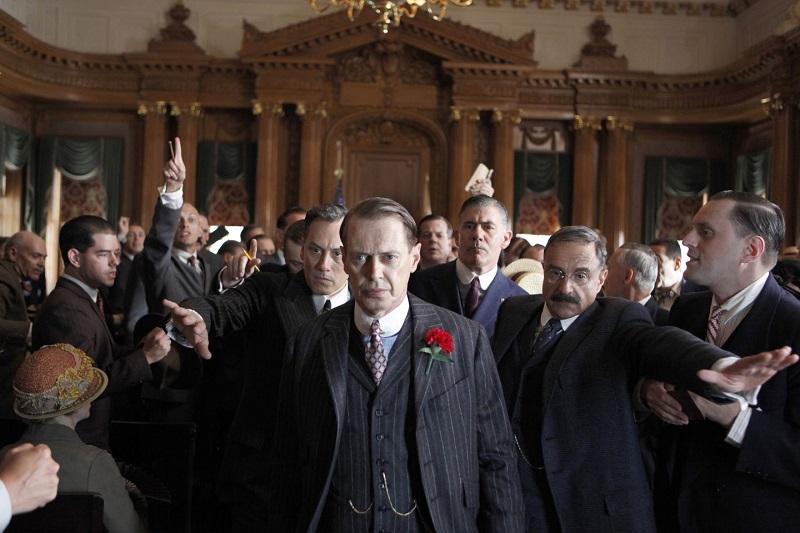
It was the role of a lifetime for Buscemi (how many actors and actresses have that experience with this list?!), who over the show’s 57 episodes delivered a scale of talent that he never had to cull from collectively throughout his entire film career. The Tarantino favorite (he was in Reservoir Dogs, Pulp Fiction and Desperado) utilized his entire actor’s toolbox and as such, audiences saw aspects of his talent that had only been teased in his big screen roles. That aspect was complimented by cinematic traits that were all laid out in that Scorsese helmed pilot. The production design was big screen worthy. Countless ‘20s-set flicks should be so lucky to have the look of Boardwalk Empire, the costume caliber and of course, the score’s composer and music supervisor aptitude that added so much to the Roaring Twenties feel to the Golden Globe and Emmy-winning HBO hit.
Westworld
In 1973 Michael Crichton (Jurassic Park author and screenwriter) wrote and directed a film called Westworld that resonated with sci-fi fans and not too many other folks. No one could have predicted that four-plus decades later, HBO and co-creators Lisa Joy and Jonathan Nolan (Christopher’s brother, who co-wrote The Dark Knight, Interstellar and The Prestige), would launch the Crichton created entity as a television program that blows minds weekly. It has become the latest television obsession for an audience that is in the middle of a platinum-plated small screen renaissance—and as such, could not be more discerning.
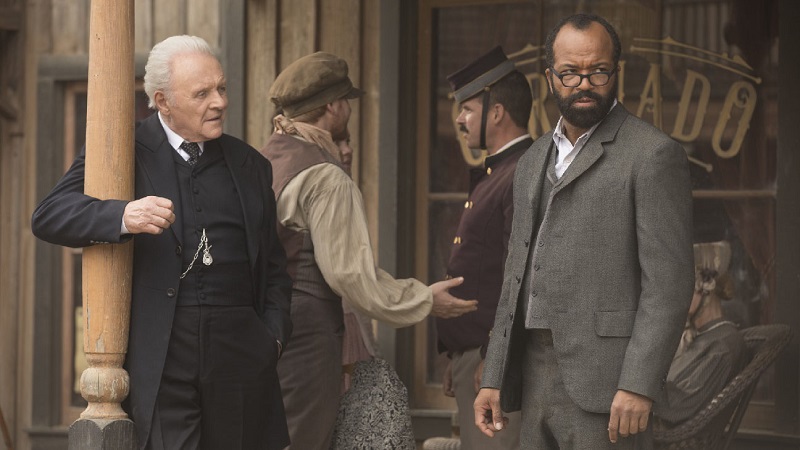
The central idea of the flick and the show is a not-so-distant future where robotics have gotten so tech advanced that their human-like qualities are uncanny. An adult-oriented theme park has opened where the uber-wealthy get to live and experience the Wild West—from the cat houses to high noon duels where the hosts, those robots I spoke of earlier, are incapable of hurting any of the guests. The thing that sends the 21st century produced Westworld through the wildly creative roof is that premise is merely the tip of the storyline iceberg. There are multiple players with a myriad of motivations that complicate this world beyond the rich living out their violent and sexual fantasies. As such, the HBO program (on its third season), is timely, ripe with moralistic quandaries and yes, cinematic. At a time when those cinemas are closed, Westworld is the perfect example of how television is delivering an Academy Award worthy effort (and everything that entails) for the masses in dire need of rich, entertaining distractions.
As things moved out of Westworld locale in season two and particularly season three, some in the media wondered if storytellers could maintain the level of richness that permeated season one. If anything, it has profusely enriched what Nolan and Joy hoped to deliver audiences, many of whom probably never saw the Yul Brenner starring 70s classic.
The ensemble is electric and filled with a slew of actors who primarily work in film—from Ed Harris, Thandie Newton, Jeffrey Wright to Anthony Hopkins. It also stars all-stars of varied mediums, such as James Marsden, Evan Rachel Wood, Tessa Thompson, Aaron Paul (Need for Speed) and Vincent Cassel (recently seen in the new home video release, Underwater). It’s impossible and does a disservice to the cast to say who stands-out, because Westworld’s ensemble is as true of an ensemble as there ever was one.
Lastly, could not shine a spotlight on HBO’s latest hit show without saluting the stunning work of composer Ramin Djawadi. It is simultaneously orchestral and futuristic in the best of ways. There are not many television programs whose score is listened to regularly on Spotify. Westworld and Djawadi’s work is firmly on my most-played list.

